How’s the food over there? Are you able to get what you need, especially given your diet? What do you miss most from home? What are your favorite Indonesian foods?
I get these kinds of questions often, and this entry shares some of my responses.
A true joy of travel involves sampling foods from different cultures. I have had great fun learning about local culinary customs, including how the Javanese use all parts of the banana plant as food (thanks for that “fun fact”, Dian!), and about the effects that colonialism has had on the Indonesian diet and practices around sugar consumption. It’s also been a treat to try lots of different tropical fruits. It’s currently rambutan and durian season, here. I’ve tried durian one time, and thought it was interesting, but not super offensive – many Indonesians expect me not to like it because it apparently has a terrible smell. So much so that nearly every hotel has a “NO DURIAN” sign displayed in the lobby. But, I didn’t find it terrible. In addition to what’s pictured below, I still enjoy salak and I eat a lot of mangoes, though I haven’t really figured out the differences in taste among the varieties; I enjoy the different kinds of bananas available, and I have eaten a lot of melon and papaya from hotel breakfast buffets as I travel. I’m sticking with eating fruits that require peeling, and so far it’s served me well.
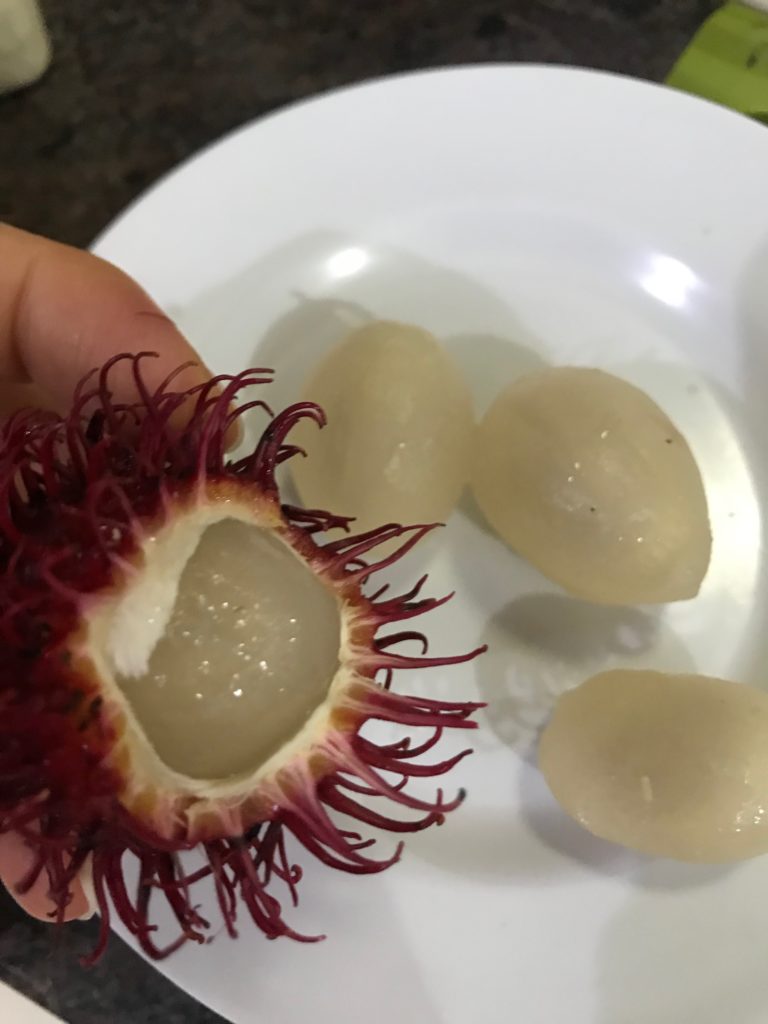
Rambutan: tastes a lot like a grape 
Dukuh: Another grape-like fruit, but less sweet than rambutan 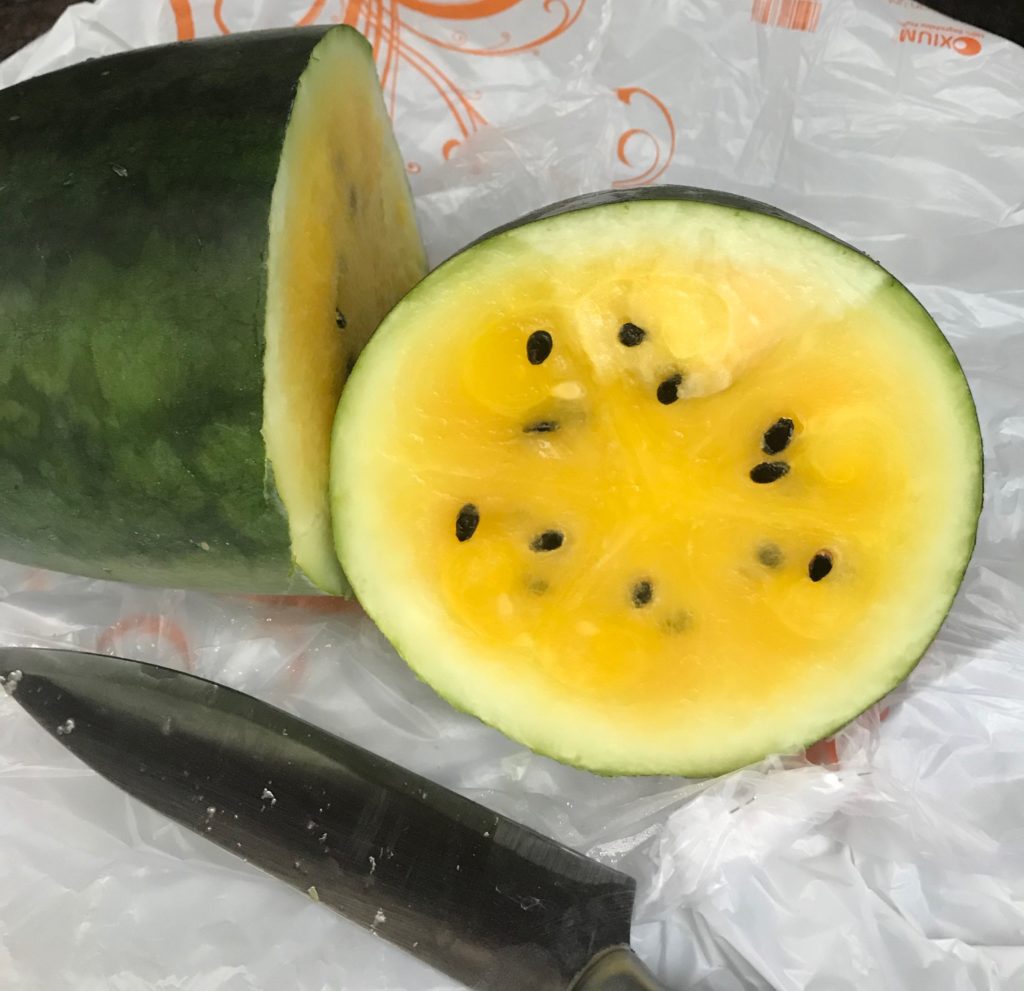
Watermelon: Just like home, only it’s yellow! 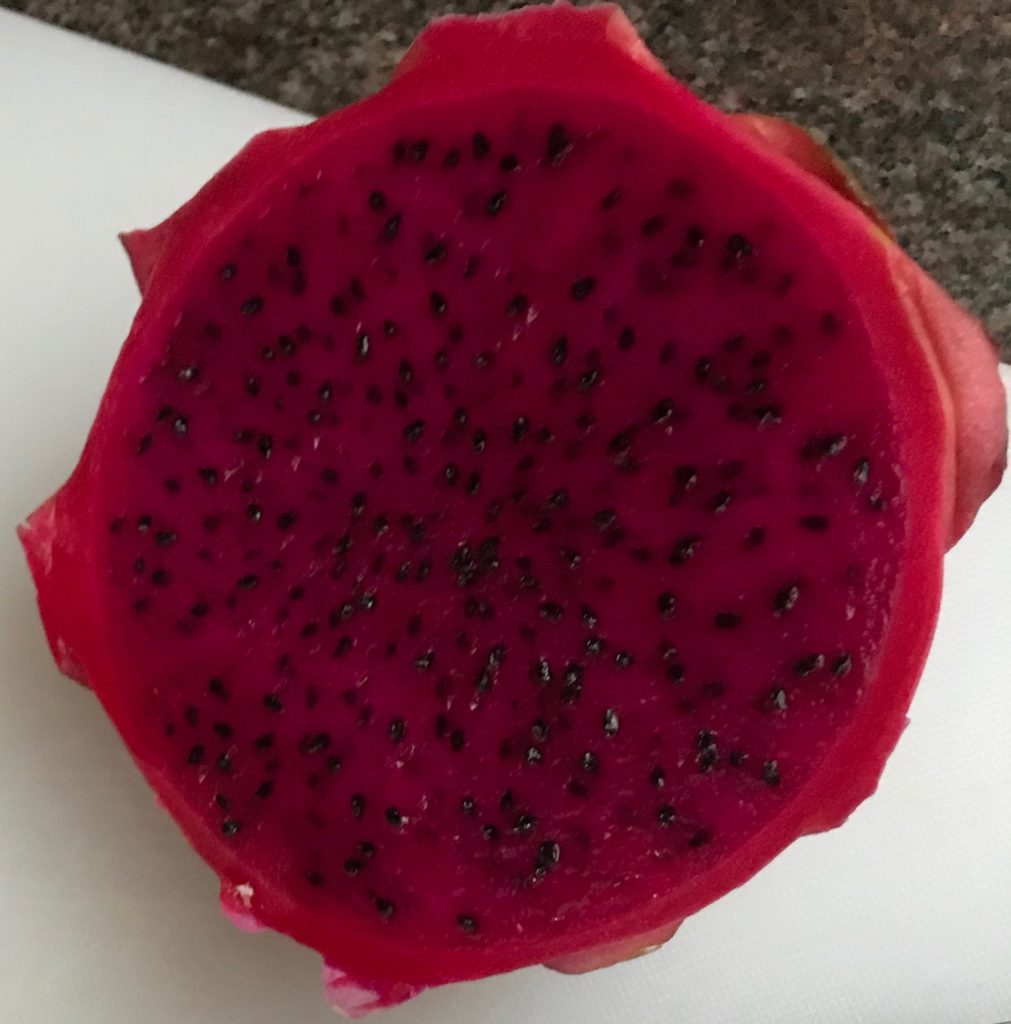
Dragon fruit: tastes much like kiwi 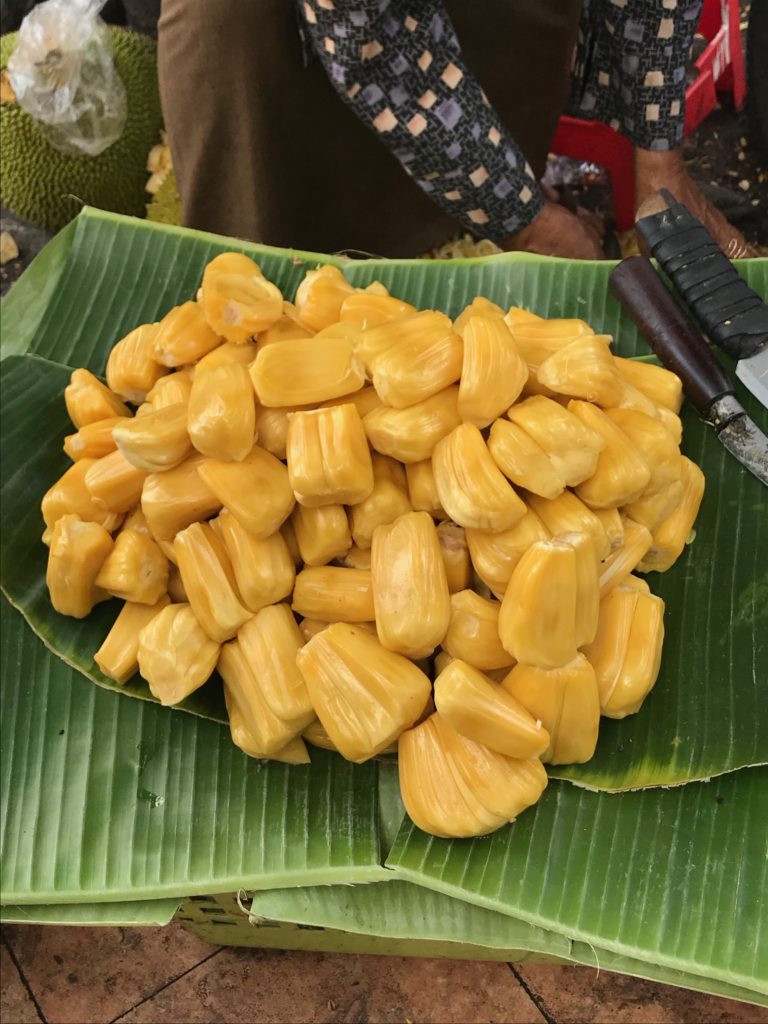
Jackfruit: Simple, not to sweet, taste and firm texture.
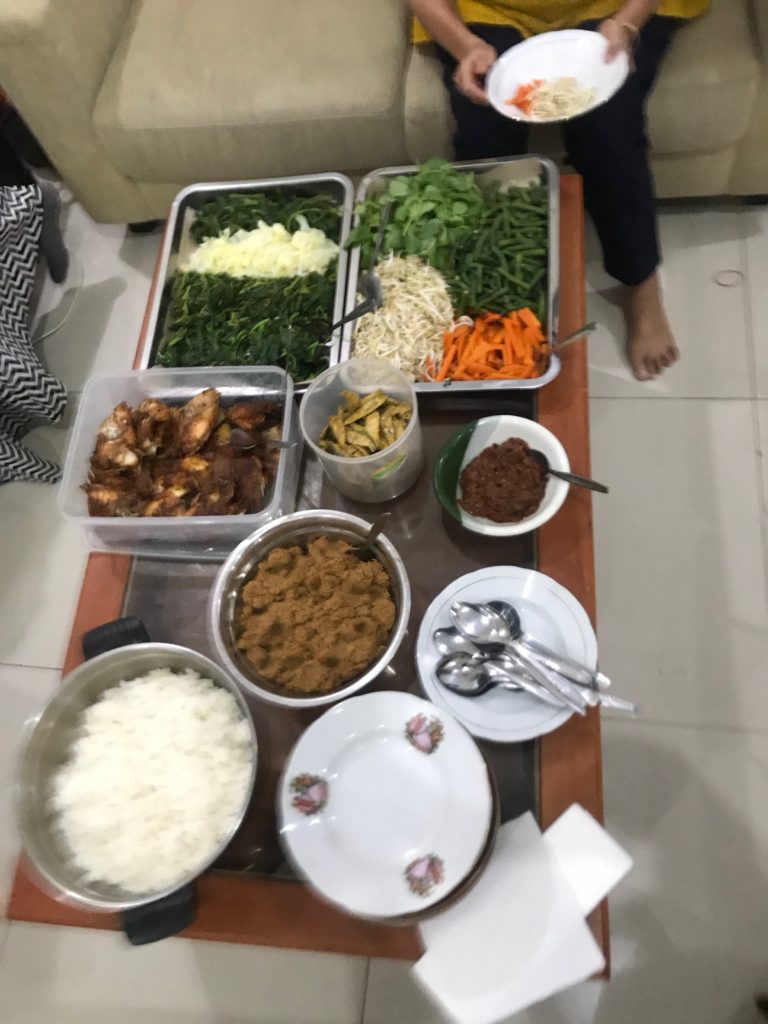
I’ve sampled many different Javanese specialties as I’ve shared communal meals with colleagues and as part of being hosted when I give lectures or workshops. Some of my favorites are urap (a salad of steamed vegetables with a spiced grated coconut topping), gado-gado (a similar salad, though this dish often comes with hard boiled eggs and a peanut sauce), and sayur asem (a sour vegetable soup). I absolutely love trying the many different sambals – or chili condiments that provide extra heat – that I come across. In many cases, I make modifications to these dishes, asking for sauces on the side or making sure that they don’t have hidden ingredients that I’m not expecting.
The unexpected surprise food delight here in Indonesia has been tempeh. Back home, I’m not really a fan of the stuff – I find it over-processed, dry, and generally not worth the expense. For Americans, it’s often prepared, packaged, and marketed as a meat-replacement, adulterated to take on meat-resembling textures and flavors. Frankly, now that I’ve had the pleasure of tasting the real thing – tempeh originated here in Java – I don’t think I’ll ever buy or eat American tempeh again. There’s no comparison! Tempeh is my go-to protein source when I’m cooking for myself in the guest house. It’s on nearly every menu and on most hotel breakfast buffets. I can buy a big block of it for less than a dollar at the traditional market near campus, and then cook it up by boiling it in seasoned broth or pan frying it.
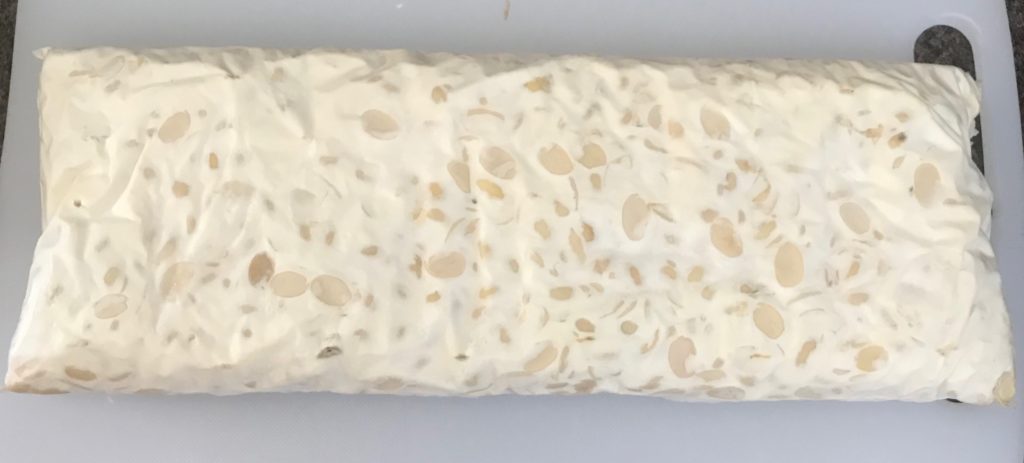
Block of fresh tempeh bought at the traditional market near UNNES. 
Pan fried tempeh
Yet, as someone who has particular commitments to what I will and will not consume, negotiating the culinary adventures of the last couple of months has sometimes been tricky, especially in light of the family-style serving practice at communal meals and the Indonesian ethos of hospitality.

At home I try to follow a whole-foods plant-based diet, but here I’ve relaxed that a bit to help me navigate meals. I’m welcoming fish into my diet more regularly. While I don’t love having my food look at me, as this guy seemed to be doing, and it can be messy and sometimes painful to debone as one eats, I’m growing accustomed to the Indonesian practice of serving the WHOLE fish.
Trying to make Indonesians understand that I do not eat meat – not even chicken – has been a challenge. Indonesians put it in nearly everything, seemingly as a condiment or seasoning. I often find meatballs or chicken in my cap cay – a Chinese-inspired vegetable stir fry – in restaurants (and had it happen on the first day of Writing Camp with the caterer, despite talking at length with her about the fact that I don’t eat meat). So, I try never to assume that a dish described as just vegetables on a menu will in fact come to me with only vegetables. I’m learning to double and triple check. Speaking of vegetables, just like back in the U.S., it isn’t always easy to get enough vegetables when dining out. As someone who doesn’t eat rice with her lunch or dinner, much to the dismay of Indonesians who believe that it’s not a meal without the “nasi”, I have learned to order many different veggie side dishes when I dine out, and my meals often look something like this:

While I’m really enjoying the exploration of local flavors and ingredients, and I’ve largely stopped trying to find/buy/import American foods, there are definitely foods I miss. Eating Middle Eastern food was a staple in my diet and part of the fabric of my socializing back in Rochester. But that cuisine isn’t available here. My go-to fruit at breakfast back home, blueberries, can sometimes be found in grocery stores here, but at such a high price due to how far it needs to travel to get to Indonesia, which doesn’t feel like a good idea on many levels. And, salads…oh do I miss having a big, veggie-filled, one bowl salad for lunch or dinner. Thankfully, some of these dearly missed foods are available when I travel. So, I loaded up on fresh salads and blueberries while in Australia and I was never more delighted with a meal than when I found a Lebanese restaurant right around the corner from our hotel in Phnom Penh, Cambodia last month.
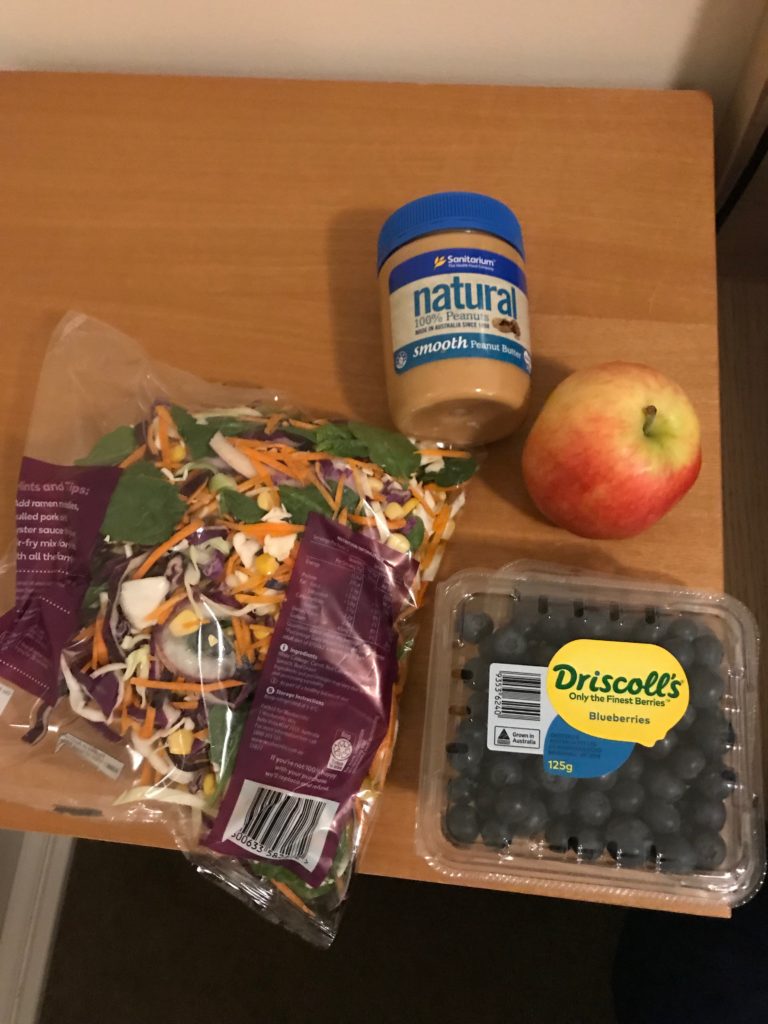
What I bought at the market my first evening in Brisbane, Australia. 
Baba ghanouj and cucumbers
take away in Cambodia – mmmm
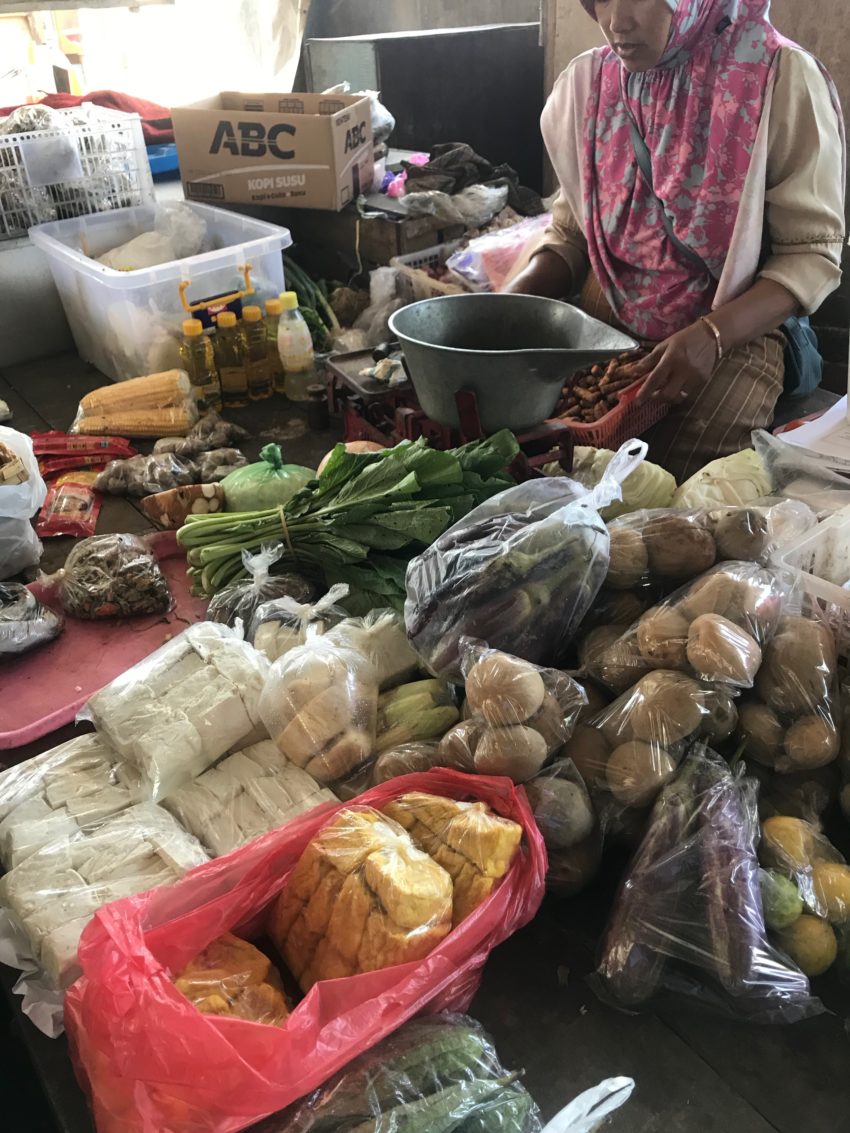
Such amazing food and you are so brave to try new things! What an adventure! You are changing lives and leaving such a legacy. Thanks for sharing.
I LOVE this post. Thanks for sharing all the details as I was curious to how you were getting all your veggies. So glad you are navigating it all so beautifully. I tried Durian in HI. I agree. BTW when is your last day of your sabbatical? It seems like it is flying by. Continue to enjoy. I can see you are accomplishing so much. Hugs
Thanks Charlotte!
It is really starting to feel like it’s going fast now, especially as we collect data and make plans for the final research presentations before I leave here. I depart Semarang on Feb 6, and depart Indonesia on the 12th. Thanks for the hugs!